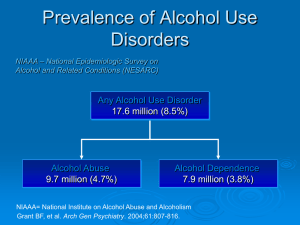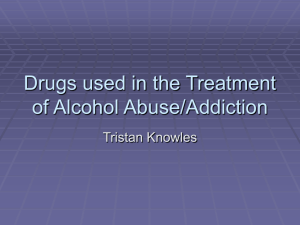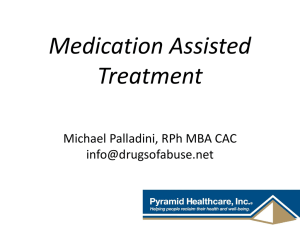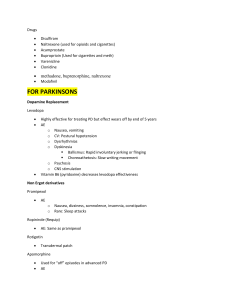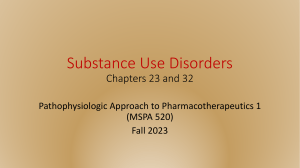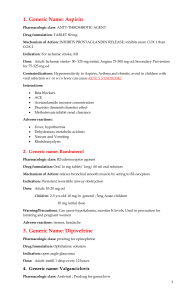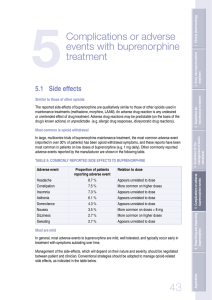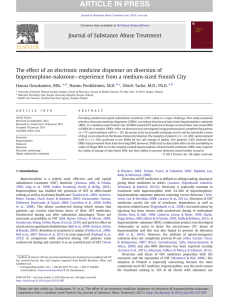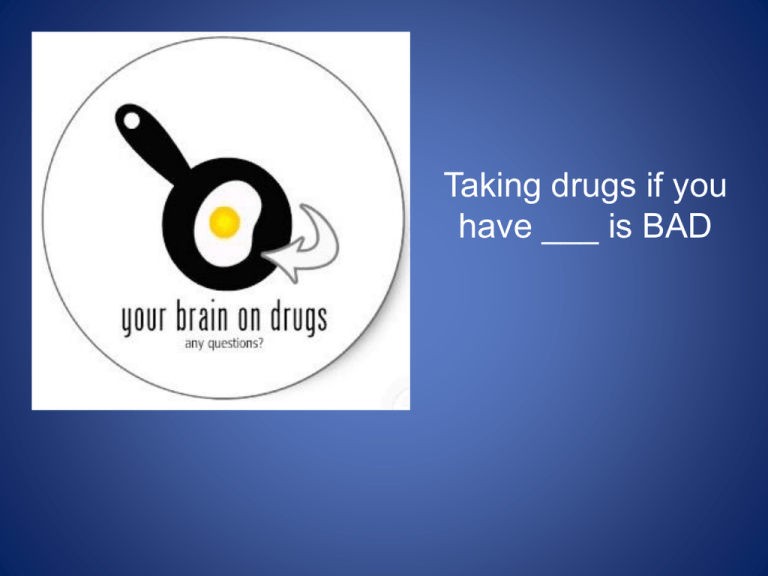
Taking drugs if you
have ___ is BAD
Increased rates transmission
• Unprotected sex
– Anal intercourse
•
•
•
•
•
•
Group sex or multiple partners
Internet partners
Injection drug users
High or intoxicated during sex
Sex work
Sex with serodiscordant partner
Substance Treatment in the USA
• Forty million Americans ages 12 and
older (16 percent)
• only about 1 in 10 people receive
treatment
• Addiction treatment programs are not
adequately regulated
Substance abuse treatments
•
•
•
•
Psychological
Pharmacological
Combination
Public Health
FDA approved pharmacologic
• Alcohol
– disulfram (antabuse)
– Acamprosate
– naltrexone
• Nicotine
– Buproprion
– Varenicline
– nicotine replacement
FDA approved pharmacologic
• Opioid
– Methadone maintenance
– Buprenorphine
– Naltrexone (PO/IM)
– Buprenorphine/naltrexone
Psychology of Substance User
• Impulsive
• Fearless
• Incapable of delayed gratification
• Opposite of people who go into health
care!!!
Traditional counseling
•
•
•
•
Immediate and Total Abstinence
Provider set goals
Confrontational
Dichotomis
– Good (What I say)
– Bad (What you do)
• Nearly Completely Ineffective!!
Transtheoretical Model
• Gradual Behavioral Change
• Conceptualized stages
– Identify patient’s current stage
– Strategies to advance the stage
• Understanding of backward and forward
progress of change
– Reduced provider frustration
– Increased patient acceptance
Primary care Intervention
Primary Care Intervention
• toxicological and questionnaire
screening
• brief motivational interviews
• active referrals
• a list of treatment providers
• follow-up booster phone call.
Risk Diagnosis Questionnaire
• Starting point for clinical interaction
• Simple self report instrument
– 13 questions
– Clinically validated
• Rapidly elicits risk behavior without
appearing judgmental
Callahan 2007
http://www.motivationalinterview.org/
Project MATCH
http://pubs.niaaa.nih.gov/publications/MATCHSeries3/


